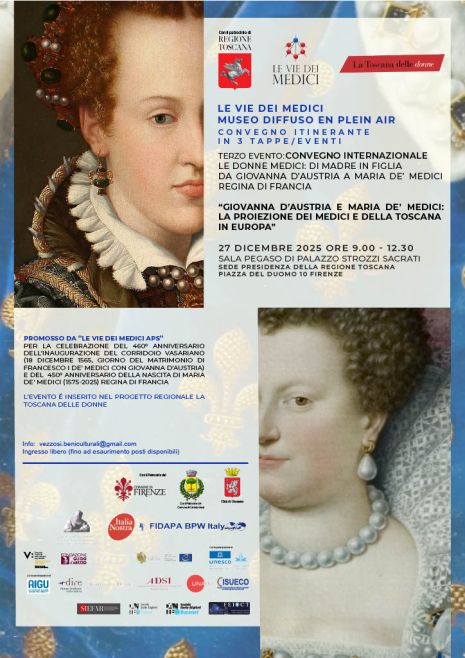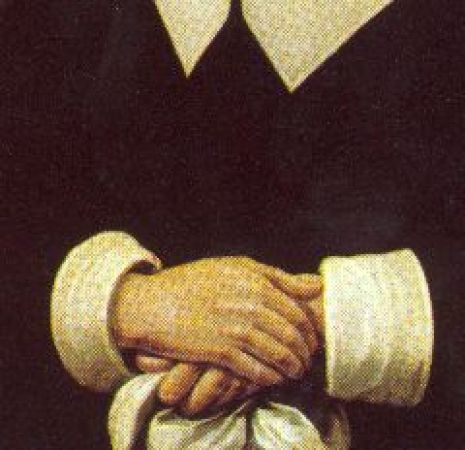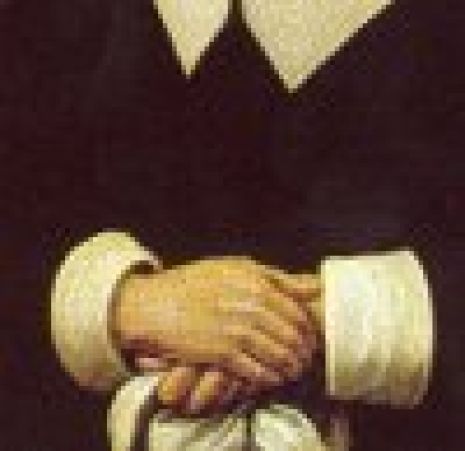

European Female Authorship: Networks and Obstacles
19 juin 2013
Final conference of COST Action IS0901
This closing conference will be held 19-21 June 2013 at Huygens ING, The Hague (Grant Holder of the Action), in the Tesselschade room.
Aim of the conference in The Hague will be to show what has been achieved over these four years, on the level of:
New knowledge about the role of women authors in Europe, during the centuries until the early 20th ;
Conception and development of new tools allowing for the analysis of new data found by using sources not yet often consulted (new sources);
New collaborations created thanks to the COST-WWIH connections developed during this period (leading to new networks).
This final conference will present the history (see also here) as well as the future of the collaborative network which has been constituting itself as a COST Action, and very successfully functioning as such. Thanks to COST we have been able to create possibilities for future and more advanced research in the field of women’s authorship from the Middle Ages over the centuries until the early 20th century.
Overview of the program content
Wednesday, 19 June 2013
9.00Registration
9.15 Lex Heerma van Voss (director Huygens ING): Revealing Dutch and European women authors
Suzan van Dijk (Chair COST-WWIH): Welcome
9.30-11.15 Session 1: « Dominating« languages and their »female » influence in Europe
We will start by focusing on the literatures/languages that are more frequently studied, and often referred to as representing ?European’ literature.
Yet, we will also situate them in their transnational, and female, context: French, English and German women authors, as groups, have been much more internationally successful than we are often aware of, and these three languages « vehicles for international communication » have often played particular roles for women.
1.Presence of Anglophone women authors in Europe
Tanja Badali« , Astrid Kulsdom, Lucyna Marzec, Marie Nedregotten S’rb »:Anglophone women authors as received in four European countries (19th century)
2.German women’s writing received all over Europe: the case of Eugénie Marlitt
Katja Mihurko-Poni?, Ursula Stohler, Zsuzsanna Varga:German women authors received in smaller language communities: the case of Eugénie Marlitt in the Czech lands, Hungary and Slovenia in the 19th and early 20th centuries
3.French as a « female? language » for queens and other women writers (18th ? 19th century): Christina of Sweden, Catherine the Great, Sophie of the Netherlands, Carmen Sylva, ?
Jelena Bakic, Isabel Lousada, Ramona Mihaila, Michaela Mudure, Efstratia Oktapoda, Suzan van Dijk:French : a women’s language « Or a question of class »
Discussion
11.15Coffee
11.45-13.00.
Session 2:Circulation of women and their writings
We then will give an impression of the ways in which women’s writings circulated in earlier periods « not always in printed form « and also with the help of the authors »circulating » themselves through different European countries.
4.Manuscript circulation of women’s texts in the early modern period ? writings by English, Portuguese, Spanish women
Vanda Anastacio, Nieves Baranda, Marie-Louise Coolahan:Early Modern Manuscript Culture and the Reception of Women’s Writing
5.Women authors traveling all over Europe and writing about it
Kati Launis, Elisa Müller-Adams, Kerstin Wiedemann:Travelling Women Writers / Travelling Texts / Women’s Travel Texts
Discussion
13.00Lunch in Belle van Zuylen hall
On show: manuscript text and letter by Belle van Zuylen/Isabelle de Charrière, which had been apparently lost, but were recently re-discovered by Hein Jongbloed (National Archives)
14.00-16.00.Session 3: Theory and practice
We also want to show how we have been and are still trying to find our way while coming from more traditional approaches, and seeing the importance of transforming theory into the practice of appropriate and effective digital tools. Testing these tools, preferably with students, and comparing our own use to those in similar projects, has been an essential part of our experience.
6.Reflections on the theoretical framework at the basis of the present and future digital infrastructure, and of future research projects, such as this one
Viola « apková, Biljana Doj’inovi », Henriette Partzsch:Reflections about the theoretical framework
7.The international reception of women’s writing compared to reception questions more generally
Elke Brems, Hester Meuleman, Orsi Rethelyi, Ton van Kalmthout:Two different approaches to the transnational circulation of literature: WWIH and CODL
8.Reporting about experiences in research and teaching
Jenny Bergenmar, Lucyna Marzec, Amelia Sanz:Learning to hack the Literary History ? teaching Transnational Women’s Writing Digitally
Discussion
16.00(for MC core group members)
Core group meeting (agenda to follow) in Deken room(for other participants)
Visit (free for conference delegates) to the Museum of Dutch Literary History, in particular the Writers’ Gallery (same building)
17.15?18.30. Presenting two temporary exhibitions
Aad Meinderts (director Museum of Dutch Literary History):Welcome
Anne-Birgitte R?nning:?Female Robinsonades: adventures of shipwreck and good behavior?
Tessa du Mée, actress:Presenting texts by Dutch women authors, entering the Museum on the occasion of the COST-WWIH conference
Arno Kuipers, collection specialist Royal Library:« Books by 19th- and early 20th-century women, entering the KB collection now »
OPENING:
Museum of Dutch Literary History:Additional Dutch women writers: new portraits for the Gallery
Royal Library:Women’s books (19th- and early 20th-century) from the KB collection
18.30Drinks and buffet
Thursday, 20 June 2013
9.00Registration
9.30-11.00. Session 4:Nations, cultures, women authors
We then will consider the geographical scope of the networks we are studying: for the first time in our field, effort has now been made to really include any European country. This is quite a challenge; first, because the amount of preparatory work carried out in each country often greatly varies; second, because during the periods researched, the understanding from one country to another, even between women and in spite of potential gender solidarity, was in some cases complex or even completely absent. Image building played an important role here, which can in particular be shown in the « connections » between women writers from western and eastern parts of Europe. Even so, in certain European centers, female authors from different parts of the continent met and exchanged directly: the role of centers like these will be discussed.
9.Women authors from the East receiving the West and reflecting Orientalisms
Nadezhda Alexandrova, Katerina Dalakoura, Efstratia Oktapoda, Senem Timuroglu:East-West and the politics of location: receiving West (re)discovering Orient
10.Women authors connecting to each other at particular ?meeting places’, such as Paris, Zürich, Prague, Istanbul (?) and others
Corinne Fournier Kiss, Alenka Jensterle-Dolezalova, Zofia Taraj’o-Lipowska:Prague as a cultural center for Slav women writers
Discussion
11.00Coffee
11.30-13.00. Session 5:Big corpora and networks (including male and female authors)
Using networks can provide a solution to several of the problems and obstacles we encounter in our field. Many of those obstacles are similar in different countries, and working together provides important practical help. But many of « our« authors were also »networking » themselves. They were not the isolated cases they may seem: they knew and read each other, or knew and read about each other (without necessarily agreeing with each other?). Present electronic tools can do justice to these connections, and indeed make visible a European female literary field. Between the tools themselves connections can again be made in a near future, so that women’s connections to male authors can also be visualised, and women’s place in the literary field taken as a whole.
11.The possibility of comparing (for the 19th century) the whole national novelistic production as opposed to translations from abroad; « male« novels as opposed to »female ».
Toos Streng, Ton van Kalmthout:
Comparing corpuses
12.New developments thanks to reflection during the COST-WWIH Action.
Gertjan Filarski:Changing horizons from data to capta: plurality in humanities research infrastructures
Discussion
13.00Lunch in Belle van Zuylen hall
On show: manuscript text and letter by Belle van Zuylen/Isabelle de Charrière, which had been apparently lost, but were recently re-discovered by Hein Jongbloed (National Archives)
14.30-17.00. Session 6:Evaluating the COST-WWIH Action
During this meeting we will also reflect on the importance of our Action for participants, as well as for colleagues who are not members. What about our aims formulated at the beginning of the collaboration’ What has been realized’ What will be done in the research projects which have been generated’
13.Reflections about our long-term objective: gendered historiography of literature
Monica Bolufer, Annette Keilhauer, Hendrik Schlieper, Lieselotte Steinbrügge, Rotraud von Kulessa
Eight theses for a renewal of literary historiography
DiscussionandShort presentations by COST-WWIH MC core group members, addressing the COST evaluation panel
17.00Visit of a famous « Ladies’ Reading Museum » founded at the end of the 19th century: Damesleesmuseum, The Hague (inscription needed!). A tour will be given and discussion is possible with present members and with Action member Lizet Duyvendak, author of a dissertation about this institution, which has played an important role for the reception of late 19th- and early 20th-century Dutch and foreign women’s writing.
20.00Conference dinner
Friday, 21 June 2013
9.00Registration
9.30-11.00. Session 7:Using large-scale approaches in view of understanding women’s merits as authors and their present place in literary history
For women authors, the large scale approach was, in a way, a well-known feature: for many centuries, they have been inventoried and assembled in those bio-bibliographical compilations which seem to anticipate databases. Present IT tools, however, not only allow particular aspects of their texts to be recognised and tagged, but also allow us to go beyond the anecdotal perspective, which is so often applied to women who participated in the public field, and to compare them on a larger scale: between women’s writings considered on various levels (content as well as form), and also between « male« and »female » texts.
14.Bio-bibliographical compilations of women authors (including the most recent Dutch compilation 1001 vrouwen): historical perspectives for comparing male vs. female ?compilers’
Janouk de Groot, Hilde Hoogenboom, Caterina Nosdeo, Mojca ?auperl:
Italy and France Compete for Women Writers in the Nineteenth Century: Bio-Bibliographic Compilations, National Literary Histories, and Alternative Transnational Narratives
15.Researching the « femininity » of women’s texts: by using stylometrics and comparison of parallel corpuses
Jan Rybicki:The Visibility of Translator Gender?
Discussion
11.00Coffee
Session 8:
11.30-13.00. Becoming Digital Humanists....
Our collective research has been carried out largely with the help of the research tool which was created in one of the earlier phases of the NEWW network: the WomenWriters database. We have used it intensely over the last four years: its use-value and the way in which it relates to underlying theory have been discussed. In ?Training Schools’, colleagues and young researchers have been trained to enter and analyse their data in this tool. The process of familiarisation has been monitored and examined, and some members, supported by IT centers in their own institutions (which were also part of the earlier Interedition COST Action), have proceeded to test the tool in different ways, considering further possibilities for our research, and the way in which it can be used by students.
16.Scholarly labour on women’s writing and digital collaboration between European countries
Wolfgang Kaltenbrunner
Scholarly labor and digital collaboration in literary studies
17.Looking to the COST-WWIH Action from the outside
Paul Wouters, Andrea Scharnhorst
Looking back, looking forward – new ways of collaborative work in the digital humanities
Discussion
13.00Lunch in Belle van Zuylen hall
On show: manuscript text and letter by Belle van Zuylen/Isabelle de Charrière, which had been apparently lost, but were recently re-discovered by Hein Jongbloed (National Archives)
14.00-16.00. Session 9:Specific messages’ sent and received
Reception documents often suggest that female readers might have had specific interest for women authors and their « feminine? or potentially »feminist’ messages. There is, therefore, a need for large-scale analysis of this communication: what kind of plots and characters did these women propose to their readers’ Did these (female?) readers react to supposedly specific messages’ To which male readers and (importantly) male critics would have been reluctant’ And finally: what about present male and/or female readers’ Are 21st-century women more easily touched by these works because of gender solidarity ?
18.Researching the « femininity » of women’s texts: by studying specific narrative topoi
Soo Downe, Francesca Scott:
The Specificity of Female Messages in the Context of Collaboration
19.Specificity of reactions to women’s works and authorship ? readers, critics, historians being often less interested by their writings than by their private life
Nancy Isenberg, Magdalena Koch, Adriana Kovacheva:
Reputation and Reception. Looking east and west and across centuries
20.Another kind of connection is the one in which we are in fact engaged as researchers: putting ourselves in between the women authors we discover and try to understand on one hand, and on the other potentially interested students, pupils or just: people fascinated, not forcibly only female?
Montserrat Prats Lopez, Suzan van Dijk :Participation as a way of creating new audiences ?
Closing discussion, taking into account our new projects, new forms of collaboration, new audiences…
16.00Tea
16.30Final: Belle van Zuylen/Isabelle de Charrière inspiring Dutch and American musicians…:
Crissman Taylor (mezzo-soprano, performing musician and educator HKU), with the collaboration of Maaike Peters (cello) and Robert Hoving (baritone):« Belle and Boswell. An unconventional correspondence ».
A Literary-Musical performance based on the original letters of Belle van Zuylen and James Boswell.
For information, contact Suzan van Dijk
Members of the organizing committee:
Suzan van Dijk, Ton van Kalmthout (Huygens ING)
Francesca Scott (Amsterdam University College)
Lizet Duyvendak (Open University)
Arno Kuipers (Royal Library)
Janouk de Groot, assistant
Core Group members of the Action
Dans la même catégorie




